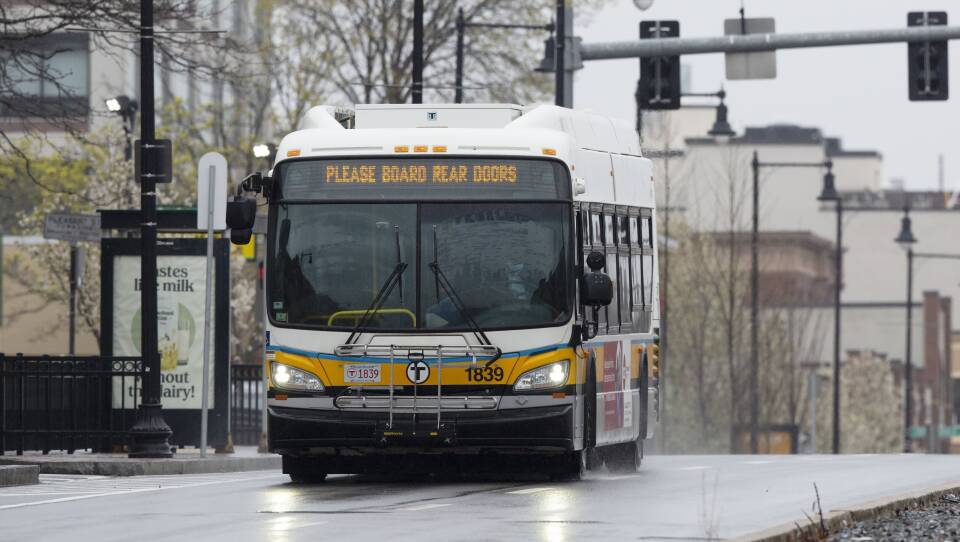The MBTA is rolling out a massive rewrite of its draft plan for overhauling the regional bus network, amending nearly two-thirds of the routes it had initially proposed in response to a deluge of public comments on the plan — but keeping the goal to increase service overall.
The agency will announce on Thursday that it’s changing 85 of 133 proposed routes from its May 2022 draft, according to its presentation before the Regional Transit Authority Council on Tuesday. MBTA employees kept issues like hospital access, ease of walking for seniors and equity. More than 20,000 comments came in about the May draft, said Doug Johnson, a project manager for Massachusetts Department of Transportation.
For context, Johnson said the national traffic manual for all public roads and highways, updated by the Federal Transit Administration, received 35,000 comments.
Johnson said most of the public criticism focused on “specific route changes that we wanted to make” on routes with “well-established transit travel patterns” for work, shopping and other regular destinations.
For example, in the May proposal, the route 39 bus — which goes from Forest Hills in Jamaica Pain to Back Bay — would have been extended to Central Square, Union Square and Porter Square in Cambridge and Somerville. To do that, the MBTA would have cut the portion between Brigham Circle to Copley Square. That plan has now "been scrapped," said Johnson.
“We ended up sort of rescinding that proposal and pairing it with a different service change in order to provide the same connection that we had wanted to make without modifying this really heavily utilized route as it is today,” Johnson said. Among other complaints, bus operators raised concerns about making bathroom breaks on a route that long.
But the prior proposal also suggested lengthening some routes, getting rid of and adding others and changing or eliminating stops. That riled riders — particularly residents of the Seaport, South Boston, Charlestown, Somerville, East Boston and Winthrop, who the survey showed were the least supportive of the redesign effort.
Based on feedback from the public and bus operators, the amended plan focuses on improving access to hospitals, senior center and other destinations and reducing walk distances between stops for seniors and other riders in locations with challenging topography.
Johnson said respondents told the MBTA that some of the the proposed changes would have been “too much” because of the “hilly terrain or non-ADA compliant sidewalks — really tough pedestrian environments, especially for folks with mobility impairments. That’s something that we really took to heart.”
The changes include new bus routing; restoration of existing routes that would have been significantly changed by the May 2022 draft; addition and subtraction of other routes; and modifications to frequency of service.
As proposed in May, the plan will double the number of “high-frequency routes” from 15 to 30, buses that run every 15 minutes or more frequently seven days a week from 5 a.m. to 1 a.m. It also still keeps the MBTA goal of an overall 25% increase in bus service.
The bus routes and network have mostly been unchanged for 50 years, Johnson said. The plan will modernize storage and maintenance facilities, decarbonize the fleet, install bus lanes and reform the network itself to better serve travel demand in the region. New employment hubs in Kendall Square, Seaport and the hospital areas were on the T’s radar for more or better service.

The MBTA also said the new plan is trying to “center equity” to keep Black and brown communities connected to the rest of the city.
“Folks who are lower income or have no or low access to personal vehicles, folks that are really dependent on service, we want to make sure that we're providing reliable frequent service to them and providing it at the times of day and the days of the week that they need it,” Johnson said.
There will be a public meeting on the new plan Nov. 2. For the so-called Better Bus Project to be executed smoothly, the MBTA will need to hire 200 additional bus drivers, along with maintenance staff, inspectors and dispatchers. With the current staffing shortages, it is uncler whether that can happen.
Without mass hiring, some parts of the plan could be still be feasible, Johnson said, like getting frequent service to Everett, Malden and Medford, Johnson said.
“Those are places we want to increase service on the earlier side.”









